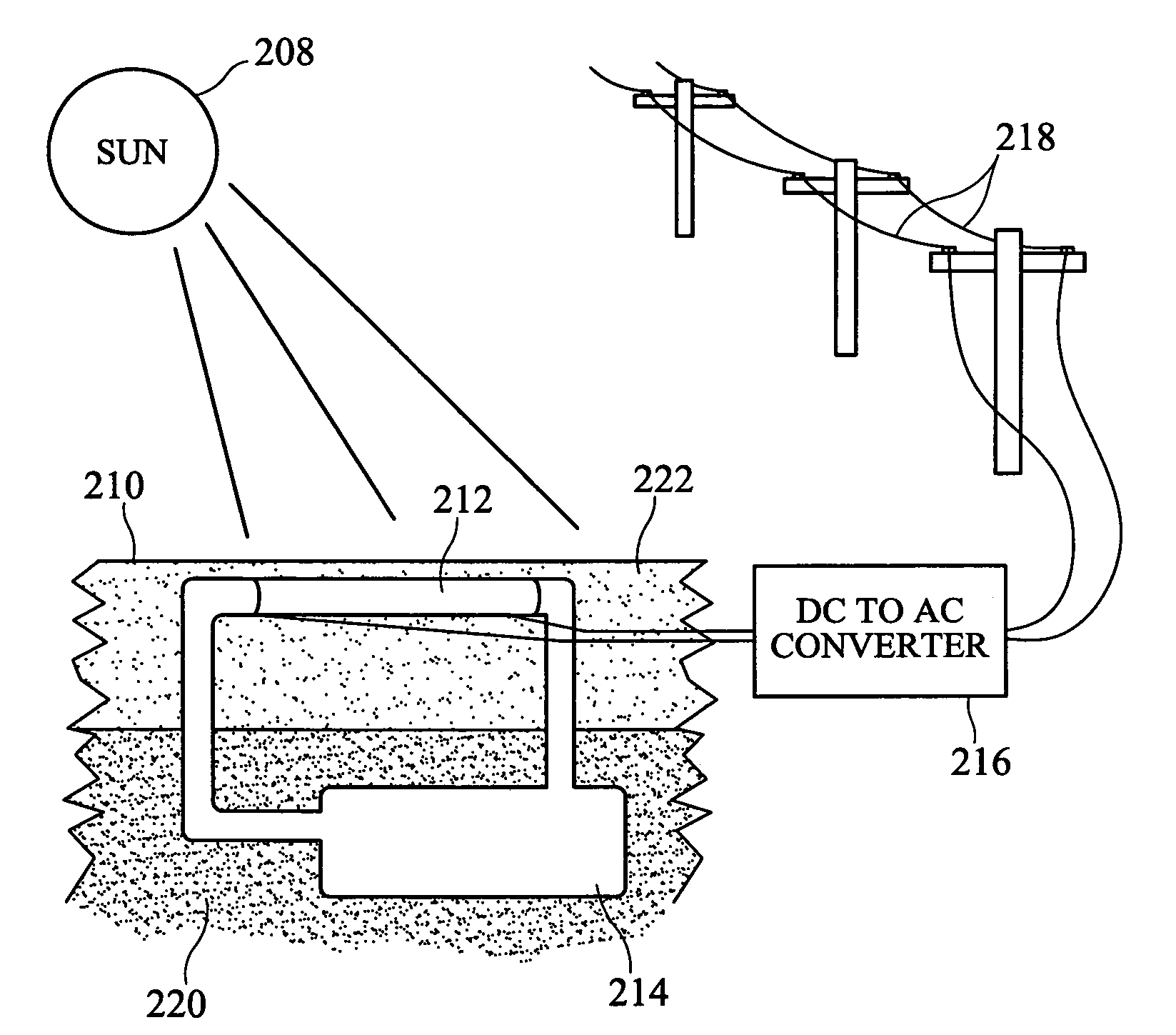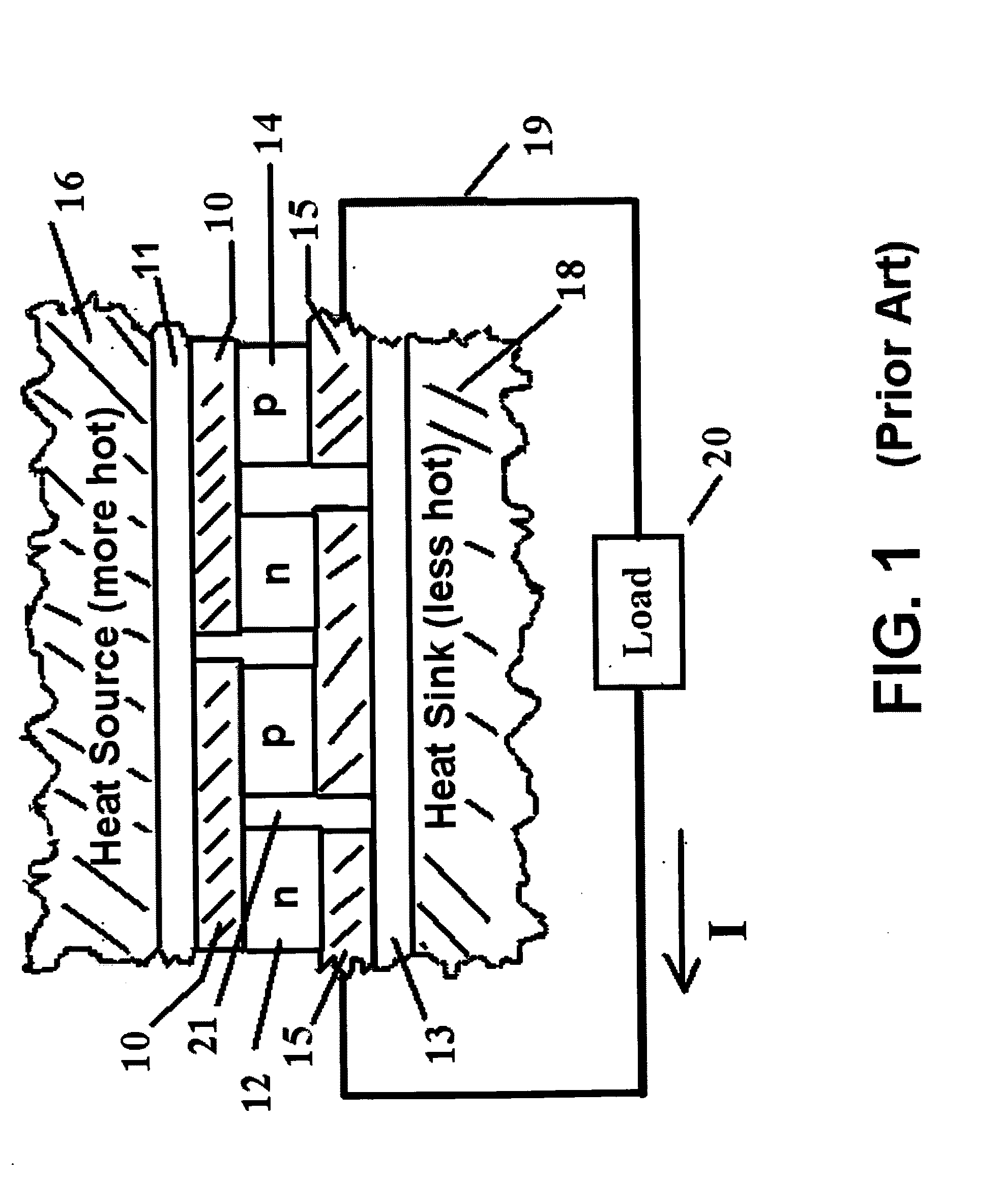Thin walled thermoelectric devices and methods for production thereof
- Summary
- Abstract
- Description
- Claims
- Application Information
AI Technical Summary
Benefits of technology
Problems solved by technology
Method used
Image
Examples
Embodiment Construction
[0237]In the following paragraphs, the present invention will be described in detail through examples and detailed drawings. Definitions of some of the terms used in describing the preferred embodiments are as follows:
Carnot limit—by the second law of thermodynamics, the theoretical limit on the ability of a device to convert thermal energy into work. The Carnot efficiency limit is given by η=(TH−TC) / TH where TH and TC are, respectively, the temperatures of the hot (source) and cold (sink) reservoirs.
Cold and hot side temperature—terms like hot reservoir, hotter side, cold side and colder reservoir are relative terms. In some implementations, the “hot” side of a thermoelectric device might be at ambient temperature while the “cold”side is at a cooler temperature than ambient. In other implementations, the “cold” side might be at ambient temperature while the “hot” is at a warmer than ambient temperature. In still other implementations, the terms “hot” and “cold” might have no relati...
PUM
 Login to View More
Login to View More Abstract
Description
Claims
Application Information
 Login to View More
Login to View More - R&D
- Intellectual Property
- Life Sciences
- Materials
- Tech Scout
- Unparalleled Data Quality
- Higher Quality Content
- 60% Fewer Hallucinations
Browse by: Latest US Patents, China's latest patents, Technical Efficacy Thesaurus, Application Domain, Technology Topic, Popular Technical Reports.
© 2025 PatSnap. All rights reserved.Legal|Privacy policy|Modern Slavery Act Transparency Statement|Sitemap|About US| Contact US: help@patsnap.com



